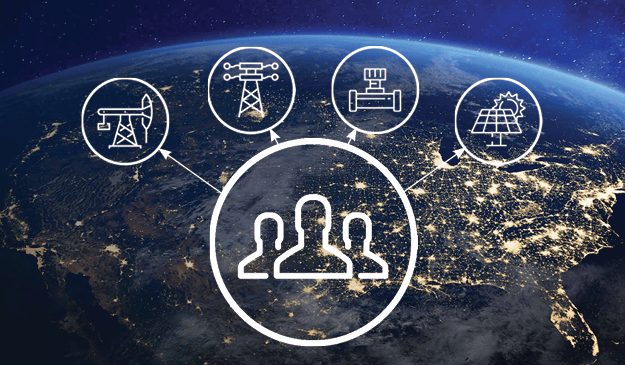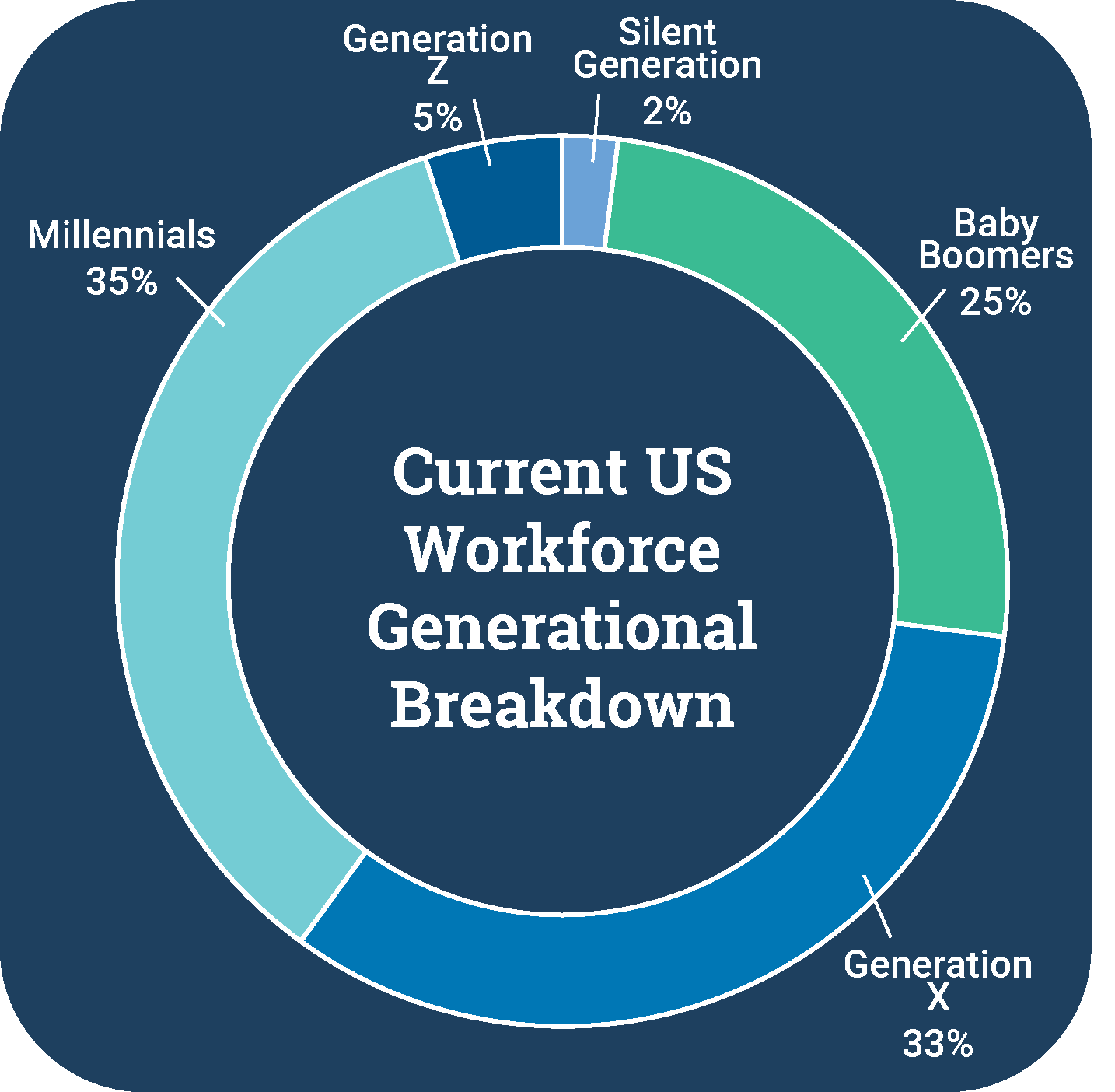Connecting Those that Connect Energy to the World

A compass, legal pad, Allen Scale, and a stack of index cards. That’s what I was equipped with on my first day working as a Landman. And that was really it. I’d brought some transferable skills from my prior experience but had no formal training, and little knowledge of my role in this exciting industry.
Although I worked for a company that provided a training program and well-documented operating procedures, most of my training came from experienced colleagues who patiently took the time to share their knowledge. But it wasn’t simply the technical skills they learned over their careers, it was also the soft skills I picked up just by being around them: from how they treat their peers to how to gain favor with the courthouse employees to ensure their copy request got priority; how to engage the local landowners in the communities where we worked; and how to represent our industry with integrity and honesty when negotiating leases or easements.
It’s been 20 years since I was a Landman digging through indices and reading old courthouse records. In that time, Percheron expanded from a company of Land Professionals to a multidisciplinary professional services firm. Each part of our company—from Title Agents to Engineers to Environmental Specialists—is critical to delivering energy domestically and around the globe.
After all this time and company adaptation, the most valuable knowledge in each part of our company still comes from the professionals and their experiences. But that knowledge isn’t always in a textbook or SOP, transferring it to the next generation of professionals is a particular challenge [that we face] as our company gets larger. So, how do we transition the knowledge and experience held in our professions to the next generations? And how do we connect a workforce that spans over multiple generations?
Tip 1: Disregard the Generational Stereotypes
At Percheron, five generations are represented across our employee base. From the Silent Generation (ages 77-94) to Gen Z (ages 10-25); the Baby Boomers, Gen X, and Millennials in between. I’m a proud Gen Xer — even though I’m often called “Boomer” by my teenage kids.
We’ve all been told the generational stereotypes:
- The Silent Generation (1928-1945), who, believe me, aren’t so silent.
- Baby Boomers (1946-1964) are stubborn, resistant to change, and have their passwords written on a post-it stuck to their monitor.
- Gen Xers (1965-1980) are negative, yell at flight attendants, and are just looking for the next thing we can ruin for Generation Z.
- Millennials (1981-1996) are entitled, thin-skinned, and only care about the contents of the breakroom vending machine.
- And Gen Z (1997-2012), who have already tried to swipe to the next story.
So, given these generational complexities, how do you best evaluate the needs, trends, and idiosyncrasies of each generation to customize communication plans, select the correct medium, and effectively implement company policies specific to each age group?
In my opinion – you don’t. Regardless of age, most people want similar things in their professional lives. We want to perform work that matters and is appreciated, we want trust and respect, and we want a reasonable amount of influence over the things that are important to us. We all have our preferred ways to communicate and absorb information, but studies show it has little to do with our age and more to do with our individual personalities.
I’m fortunate to work alongside a tremendous group of professionals of all ages who buck the negative stereotypes associated with their generation. I know several Boomers who are early adopters of technology and Millennials who show up early and work late. I work with positive and optimistic Gen Xers, and Gen Zers who are engaged and provide valuable input.
Tip 2: Create a Two-Way Street
 Once we stop dismissing groups based on their life experience or generational stereotypes, we can create a space for shared thoughts and solutions to energy and infrastructure challenges. It’s important to note that this environment should not be a one-way knowledge conduit from the old guard to the new generation. Assuming only the older generations of professionals have the knowledge to share and discount the fresh ideas and influences from those entering the workforce. Instead, those of us in the older generations must be humble enough to accept the way things were done “in our day” might not be the best way for the future while respecting the knowledge that only comes after years of industry experience.
Once we stop dismissing groups based on their life experience or generational stereotypes, we can create a space for shared thoughts and solutions to energy and infrastructure challenges. It’s important to note that this environment should not be a one-way knowledge conduit from the old guard to the new generation. Assuming only the older generations of professionals have the knowledge to share and discount the fresh ideas and influences from those entering the workforce. Instead, those of us in the older generations must be humble enough to accept the way things were done “in our day” might not be the best way for the future while respecting the knowledge that only comes after years of industry experience.
The future success of our industry must come from a collaboration of ideas influenced by diverse backgrounds, skillsets, experiences, and perspectives. To bring these voices together, we must create opportunities for idea-sharing.
At Percheron, we’ve formed teams to share knowledge and create policy in most major areas of our organization. These include Project Management, Employee Engagement, Safety, and Environmental and Social Governance. These teams are comprised of members with expertise across multiple disciplines, diverse life experiences, different priorities, and perspectives, and yes, different generations.
Through discussion and collaboration, these teams have helped us create policies and solutions that are easily implemented and widely adopted because they fit the needs of many and not just those at the top.
Additionally, we use Lunch and Learn discussions to promote knowledge sharing to better understand the challenges each department faces when working on an integrated project. In these discussions, our employees share their “day in the life” with coworkers outside their areas of expertise.
This idea-sharing across disciplines and generations has allowed Percheron to build efficiencies in communication, implement and create technology that supports all facets of the project, and gather lessons learned in an open and honest way allowing professional growth and opportunities for improvement.
Tip 3: Lead Through Connection
We’ve just talked about how team members from all generations can offer valuable perspe ctives. But corporate leaders have a broad, high-level perspective across the company because we have access to more information than anyone else. It is our responsibility to use that information to make decisions that are in the best interest of the company (i.e., most of our team members). But if leaders are distant from our team members, our perspective becomes disconnected and blurred. It becomes numbers on spreadsheets, with no new ideas from other people. And our leadership decisions become irrelevant to the goals of people throughout the organization.
ctives. But corporate leaders have a broad, high-level perspective across the company because we have access to more information than anyone else. It is our responsibility to use that information to make decisions that are in the best interest of the company (i.e., most of our team members). But if leaders are distant from our team members, our perspective becomes disconnected and blurred. It becomes numbers on spreadsheets, with no new ideas from other people. And our leadership decisions become irrelevant to the goals of people throughout the organization.
To combat this, disconnect, we need to get out of our chairs (either physical or virtual) and meet our team members where they are. At Percheron, we promote servant leadership in which managers exhibit vulnerability to create an atmosphere that fosters feedback, new ideas, and solutions to shared challenges. This method allows us to understand what is important to our team members and their families. What do they see as challenges across the organization, and where do they see opportunities?
As leaders, we can’t always meet the individual needs of every employee, but we have a better chance to create effective policies to support a broader group when we hear the desires of the company directly.
We have an outstanding team at Percheron and I’m proud to work alongside those that lay the groundwork for energy and infrastructure across the country. Knowledge sharing coupled with innovation provides our company continuous improvement, consistency, and sustainability. The next generation entering the workforce can not only sharpen their skillsets, but also provide fresh outlooks to innovate and adapt to the needs of tomorrow.
By: Trent Oglesby
Trent Oglesby is Chief Executive Officer of Percheron, LLC. He was integral in forming a fully integrated client offering, hiring key personnel to help create and implement the policies and standards that have now formed one of the largest and fastest-growing land services company’s in the United States. Trent began his career working as an independent Petroleum Landman in 2000 with OGM Land. Through subsequent years working in the oil & gas industry, he realized the need for right of way services, founding Percheron Acquisition, LLC, and surveying services, co-founding Percheron Surveying, LLC. He lives in Fulshear with his wife Amy and two children, where he remains active in his church, community, and his children’s various activities.
